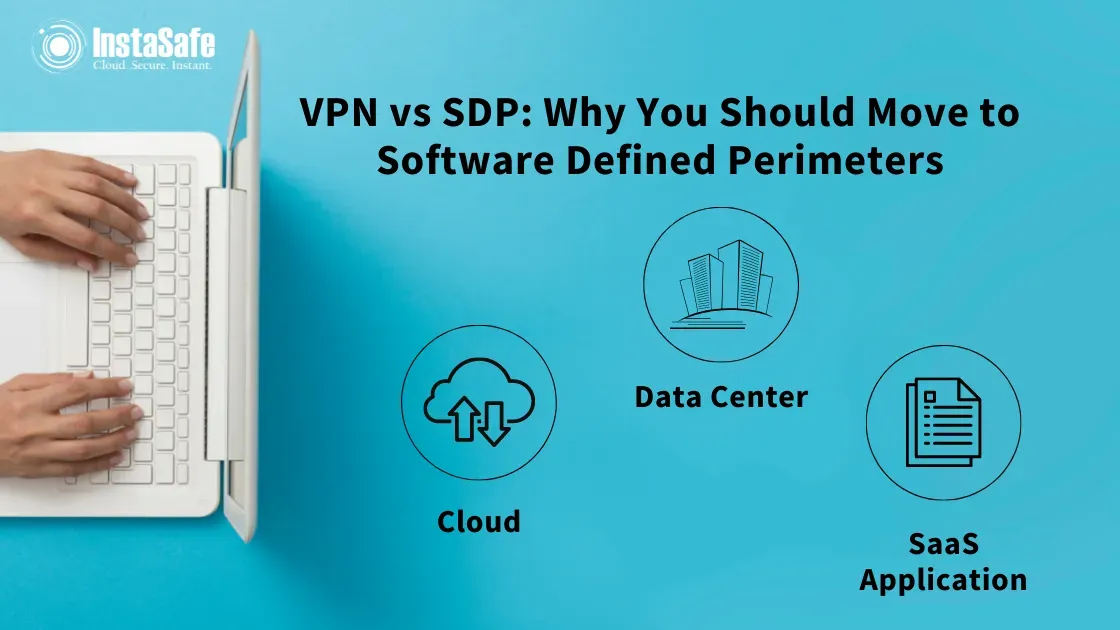VPN vs SDP: Why You Should Move to Software-Defined Perimeters

Interested to learn more about differences between Software Defined Perimeter vs VPN? Read on to learn more.
The remote working environment has been around for a while, and Virtual Private Networks (VPNs) has been the preferred technology solution to access a company’s resources from remote locations.
However, while VPNs work well for the need of a limited number of remote employees and digital resources—their perimeter-based security solution no longer serves today’s security purpose and proves to be weak, vulnerable, outdated, and more prone to cyber-attacks.
Ever since the pandemic, today’s remote workforce and environment requires a much more secure and robust remote access solution—since data is no longer stored and is instead stored in the cloud for seamless collaboration.
This is where Software-Defined Perimeters (SDP) comes into play. This blog will dive deep into SDP vs VPN and see what makes SDP the best and most secure alternative to VPN connections.
But first, let’s see what SDP and VPN are.
What is a Software-Defined Perimeter (SDP)?
A Software-Defined Perimeter (SDP) is a modern cybersecurity approach that addresses the weak inherent traditional security approaches.
The traditional castle and moat model protects the network resources with a secure perimeter around the network. However, it fails to protect the resources inside the network—making the network infrastructure vulnerable, expensive, visible, and increasing the attack surface.
SDPs eliminate these vulnerabilities as they rely on user authentication and segmentation instead of hardware that creates a protective boundary. In addition, it employs the least privilege model to restrict user access and makes it easy for you to customise and automate security policies.
Hence, instead of defending a physical network—SDP focuses on protecting the company’s logical network—only providing access to users after strict authentication and authorisation.
Now, let’s see what VPNs are and how they differ from SDPs. This will help you understand the difference between SDP and VPN in much better terms.
What is a Virtual Private Network (VPN)?
A VPN works as an encrypted network that runs through an unencrypted network such as the internet. VPNs act as gateways—allowing trusted users and devices to pass through the secure network perimeter and access the protected resources and applications.
However, VPN-based security is highly vulnerable to modern attacks and cybercrimes.
Here are some of the demerits of VPNs that make companies and organisations adopt the alternate solution for VPN.
- VPNs are expensive to manage, scale and deploy.
- They impact modern network performance due to longer network paths—resulting in backhauling and latency issues.
- They widen the attack surface—making your network more vulnerable to cyberattacks.
- VPNs increase the management complexity and require huge operational expenditure and maintenance.
Zero Trust VPN is an excellent VPN alternative besides SDP. But let’s learn more about Software-Defined Perimeter vs VPN for your network security.
SDP vs VPN: Which Solution is Better for Your Organisation?
Here’s how SDP ensures maximum security and network protection against potential data breaches and cyber-attacks.
Conclusion
While VPNs were the preferred remote access choice, they failed to sufficiently secure today’s modern network infrastructure. Besides being hard to scale—VPNs also increases the attack surface, management complexity, and performance and latency issues.
On the contrary, SDP is an excellent VPN alternative that ensures high network security, performance, granular access control, and user experience.
We hope this article helped you better understand the difference between Software Defined Perimter vs VPN.
So, if you’re looking for a secure remote access solution, check out our InstaSafe products to upgrade your security posture with our Zero Trust solutions. Replace your traditional VPN setup with our cost-effective Zero Trust to leverage easy scalability, seamless remote connectivity, smooth performance, and more.
Book a demo today to learn more.
Key Products
MFA | I&AM | ZTNA | Zero Trust Application Access | Secure Enterprise Browser
Key Features
Single Sign On | Endpoint Security | Device Binding | Domain Joining | Always On VPN | Contextual Based Access | Clientless Remote Access | Device Posture Check
Key Solutions
VPN Alternatives | DevOps Security | Cloud Application Security | Secure Remote Access | VoIP Security
